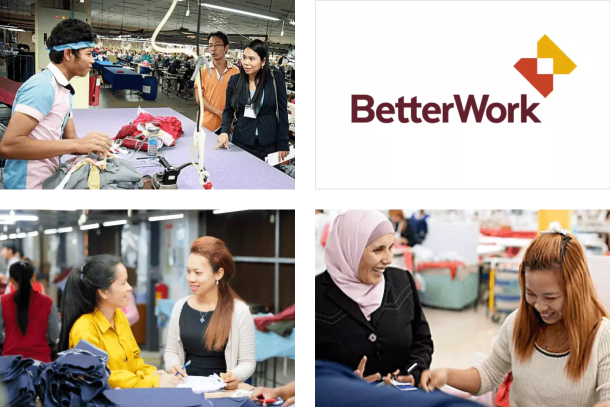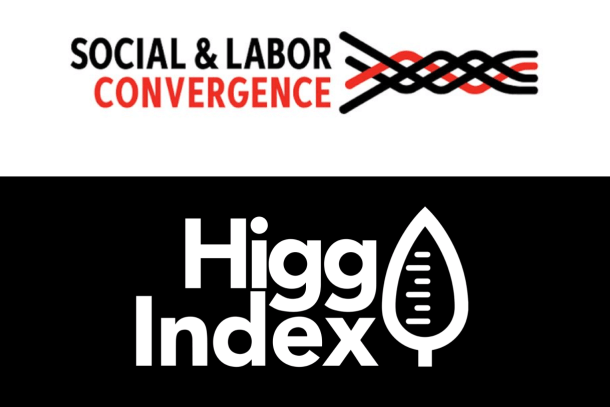We partner with suppliers who share our dedication to utilizing the best practices in human rights, labor rights and workplace safety. Our commitment to global human and labor rights and to ensuring that our products are made in safe and responsible factories is aligned with UN Sustainable Development Goals 1 and 8.
A&F Co. Strategy
To improve transparency and achieve full accountability, A&F Co. communicates with all vendors on our company’s transparency expectations during audits and makes clear the company is prepared to terminate relationships with vendors if violations are found. This is our way of ensuring that people in our supply chain are treated with dignity and respect as we aggressively work with our vendors to prevent instances of child labor, discrimination and pay discrepancies.
Increasing Transparency
The apparel supply chain is complex with multiple suppliers, facility types, geographic locations and distribution networks. The process of transforming raw materials into finished goods involves as series of “tiers” designated by the production performed at each phase. A&F Co. defines supply chain tiers as follows:
| Tier 4 | Tier 3 | Tier 2 | Tier 1 |
|---|---|---|---|
Spinner, Raw Material Extraction | Fabric Mill | Laundry, Print, Embroidery, Trim | Cut & Sew |
| Cultivation and extraction of raw materials from the earth, plants or animals | Knitting and weaving of textiles | Production process and finishing (e.g. embroidery, printing, garment dyeing, washing, etc.) | Cutting, sewing, stitching, packaging |
| Yarn production (extrusion, spinning, etc.) Conversion of wood products into pulp | Fabric dyeing, bleaching, finishing, washing, embroidering | Manufacturing of trims (e.g. labels, zippers, etc.) | |
| Leather preparation | |||
| |
These dynamic networks present many challenges to brands and retailers. Yet, there is increasing demand for transparency – or the expanded visibility into the various levels of a company’s supply chain – by today’s consumers, stockholders and other stakeholders to know where products and their inputs are being made. In addition, this increased visibility allows A&F Co. to engage more effectively with our supply chain partners and rapidly adapt together to changing business environments.
At A&F Co., we’re committed to transparency across our global supply chain. While we don’t own the factories that produce our products, we work closely with our agents and vendors to ensure visibility into every step of the process. We require all vendors to disclose their Tier 1, 2 and 3 suppliers, as well as subcontractors, in support of our policy of full supply chain transparency. Through ongoing audits, we continue to expand our oversight and accountability. These efforts are made possible through long-standing, collaborative relationships with our partners.
To enhance transparency, A&F Co. publishes 100% of its Tier 1, 90% of its fabric mill, 90% of its trim suppliers, and 100% of personal care filler locations with the following information on an annual basis: parent (vendor/agent), factory name, factory street address, factory city and country, production category, number of workers, percentage of workers by gender and percentage migrant workers.
Active Supplier List (2025)
Active Supplier List (2024)
Active Supplier List (2023)
Programs & Partnerships
We work together to ensure factory meets company standards.
Sustainability
All business partners are contractually required to adhere to our Vendor Code of Conduct.
Sourcing
Subcontractors to the factories are included in this process.
Quality Assurance
Before production, a factory must go through a rigorous Quality Assurance inspection.
Social Audit
Initial social audit takes place prior to production.
Better Work
Better Work is a partnership between the United Nation’s International Labour Organization (ILO) and the International Finance Corporation (IFC), a member of the World Bank Group which brings together all levels of the global garment industry to improve working conditions and respect labour rights for workers, while boosting the competitiveness of apparel businesses. The Better Work approach creates lasting, positive change to supply chains through factory assessments and training, as well as advocacy and research that changes policies, attitudes and behaviors.
As a Buyer Partner of Better Work, A&F Co. engages with both the Better Work Programme and national stakeholders to drive change through assessment, advisory and training services to registered suppliers. Together with other Buyer Partners, we discuss supply chain challenges and identify innovative solutions to support the development of stable and well-managed sourcing environments at national level where workers’ rights are realized and business gain a competitive advantage to grow.
A&F Co. partners with Better Work in over 100 factories to strengthen the factories’ monitoring and management system, knowledge of legal requirements and sharing industry best practices. All A&F Co. factories in Bangladesh, Cambodia, Egypt, Indonesia, Jordan and Vietnam are eligible to participate in the Better Work program and are required to join.
Factories are assessed by the Better Work team and, depending on the assessment findings, each factory develops a training plan under Better Work enterprise advisors’ guidance. In addition, Better Work conducts 3 to 5 advisory visits to factories to develop an improvement plan and assist factories in correcting the issues.

Social & Labor Convergence Program(SLCP)
The Social & Labor Convergence Program (SLCP) provides a common tool for the apparel industry to capture accurate data about working conditions in supply chains which measures working conditions in factories across nine key areas: recruitment and hiring, working hours, wages and benefits, employee treatment, employee involvement, health and safety, termination, management systems and empowering people and communities.
SLCP collaborates with Better Work to reduce audit duplication, facilitate data sharing, and promote compliance with national laws and international standards. All A&F Co. factories are required to share their Better Work assessment data via the SLCP. Currently, Better Work uses the data-sharing via SLCP in Bangladesh, Indonesia, and Vietnam. Implementation in Cambodia is expected soon.

Third Party Audits
A&F Co. uses third party monitoring firms to conduct its social audit. These auditors are fluent in local languages and knowledgeable of local laws and regulations. Auditors visit our partner factories annually or biennially and administer a full audit with every visit. Certain high-risk factories or new facilities may receive more frequent or unannounced audits. To maintain the integrity of the audit, A&F Co. does not provide the audit date to the factories ahead of time. However, to ensure the necessary personnel is available and the documentation can be gathered in time, we do offer a two-week window during which the audit will occur. In addition, before production can being at new factories, A&F Co. has a specific New Factory Setup Workflow that must be completed.

Pre-Audit Steps:
- A&F Co. requests audit from third-party firm
- Monitoring firm contacts factory directly
- Firm provides two-week window when audit will occur
- Factory signs appointment letter to confirm audit
- Factory begins preparing documentation
Day-of steps:
Open Meeting
Focus: purpose and procedure of audit and required documentation
Document Review
Focus: payroll, time records, legal documents, production records and purchase orders
Health & Safety Evaluation
Focus: factory tour
Employee Interviews
Focus: private conversations
Closing Meeting
Focus: findings and Corrective Action Plan (CAP)
If any issues are uncovered during an audit, the factory must take immediate steps to correct the problem. This begins with creating a corrective action plan within 14-30 days.
Next Steps:
Auditing is not the only focus of our company’s engagement with our supply chain partners. A&F Co. has and continues to undertake a variety of social, environmental and capacity building programs to promote worker well-being, health and safety, environmental improvements, and more.
More information on these impact areas can be found on our Social Impact and Environmental Areas pages.
Hire a Partner
Since 2023, to gain greater transparency, visibility and insights into its supply chain, A&F Co. utilizes a digital survey for key suppliers in partnership with Hire a Partner (HAP). HAP provides training and tools to help vendors trace product origins and comply with evolving due diligence laws. The data collected supports A&F Co.’s work to achieve a safer supply chain system – benefiting people and the planet – and enables A&F Co. to be more precise in our response to supply chain challenges.
Similar to our transparency work, A&F Co. is also increasing its product traceability efforts. For further information on product traceability, visit here.
Vendor Relationships
Cultivating meaningful relationships with our agents & vendors is extremely important. These relationships reduce risk and allow productive change by creating a more collaborative and transparent environment. While not solely determined by length of relationship, longer vendor relationships generate trust and encourage sustainable capacity building. A&F Co. has partnered with 33% of our agent & vendor base for over 10 years and will continue to build long-lasting relationships.
Length of Agent and Vendor Relationships
as of 2024
33%
10+ Years
22%
6-9 Years
31%
1-5 Years
14%
<1 Year